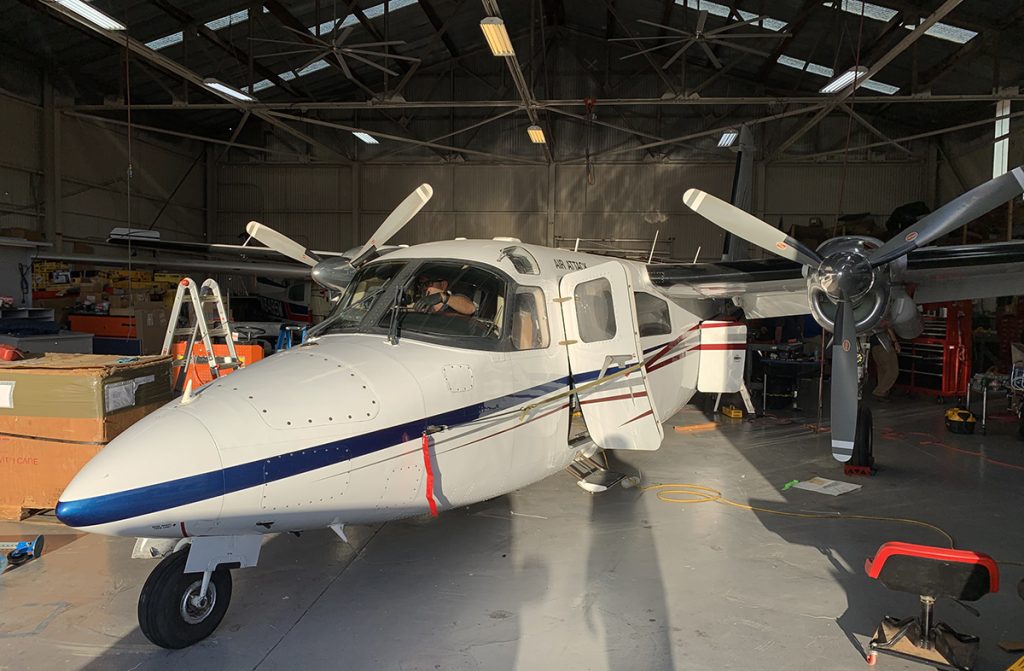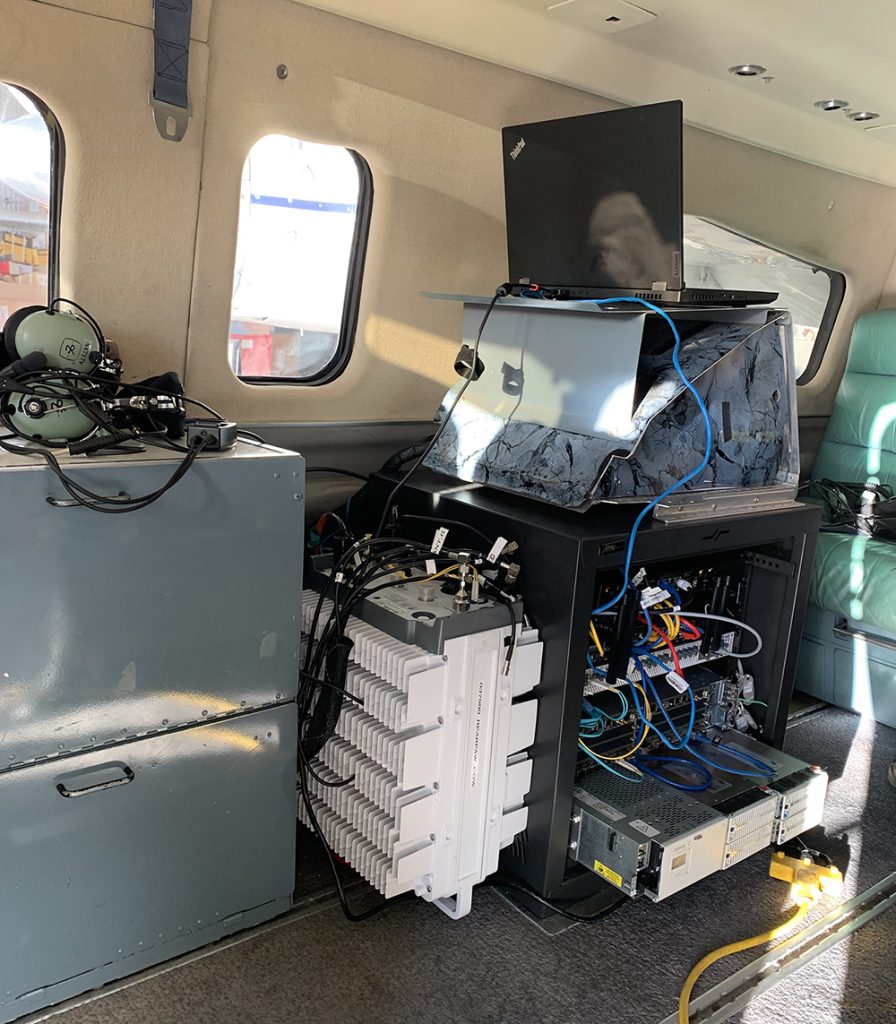
Courtney Aviations’ Aerocommander with networking equipment, microwave downlink and cellular eNodeB installed. Photo: Insitu
Boeing, Insitu and Courtney Aviation
Test 4G LTE Technology to
Improve Remote Data Connectivity
Aircraft with wireless connectivity successfully expanded
mobile coverage in remote mountainous terrain
BINGEN, Wash – December 8, 2022 – Boeing; [NYSE: BA] Insitu, a Boeing Company; and Courtney Aviation successfully demonstrated wireless technologies on a manned aircraft that can extend vital communications to wildfire fighters and bring previously unattainable video and data to first responders on the front lines.
The flight tests, conducted in an area of Northern California affected by wildfires, involved a Courtney Aviation aircraft equipped with a 4G eNodeB receiver/transmitter. The Turbine Commander aircraft, using a flight path design and antenna range calculation provided by Insitu, flew for four hours at four different altitudes over mountainous terrain.
“Insitu is exploring 4G and 5G technology applications. Aerial 4G LTE connectivity is a starting point,” said Tom Bleier, Insitu business development representative. “Providing cellular coverage to dispersed users enhances the safety and efficiency of firefighting and other first responder efforts while reducing the impact to the environment and risk to people and property. We believe this same commercial off-the-shelf technology could benefit our defense customers.”
The engineering team transmitted voice, text, video chat and other data to and from ground-based cellular users via the aircraft-based cellular node. The successful test provides a baseline for further development of a capability to help first responders ensure they have the mission-critical communications capabilities they need when responding to wildfires and severe weather events.
Boeing autonomous test teams provided radio frequency and data network design, modeling and simulation. Boeing continues to make investments in the full spectrum of autonomy and artificial intelligence. Adding capability to unmanned aircraft will be a force multiplier for customers in the future.

Networking equipment, microwave downlink and cellular eNodeB installed. Photo: Insitu
Courtney Aviation provided a mobile microwave-enabled data communications van used in supporting wildfire response.
“Working with Insitu allows us to fly a cellular site that becomes an important part of suppressing wildfires while increasing the safety of emergency responders,” said Hart Drobish, Courtney Aviation president.
Reliable wide-area datacoms disseminate real-time fire intelligence, increasing shared situational awareness (SSA) for frontline emergency personnel. SSA provides fighters with more than the big picture view from above and real-time fire maps. It enables intuitive shared understanding and coordination between air and ground resources at a new level. The technologies tested could be applicable to Insitu’s unmanned aircraft systems in the future, offering advanced cellular connectivity solutions to the U.S. Department of Defense. The demo lays the groundwork for future wireless networking technologies, including those in the 5G spectrum.
About Insitu
With offices in the U.S., U.K., and Australia, Insitu creates and supports unmanned systems and software technology that deliver end-to-end solutions for collecting, processing and managing sensor data. To date, our systems have accumulated more than 1.3 million flight hours.
About Courtney Aviation
Courtney Aviation operates in service of various natural resource management agencies. The company has focused on growth in the fire and technology market as the fire suppression industry continues with an ever-increasing demand. Courtney has been leading the fire intelligence industry for the past decade. The company utilizes various imaging sensors and data downlink modalities to bring real-time fire intelligence to key decision makers for enhanced situational awareness and decision-making.
Contact
Pat Host, Insitu Communications Specialist
patrick.host@insitu.com | 202-856-4396
More news
Insitu, GKN Aerospace and TNO Team Up to Develop Advanced Radar System for Integrator
October 05, 2021Read more
Recent News
Successful Liquid Hydrogen Fuel Cell Test
Insitu together with a research team from Washington State University demonstrated for the first time the use of a unique refueling system for powering Unmanned Aerial Vehicles (UAVs) using liquid hydrogen.
Read More »Insitu Advances its Fuel Cell Strategy
A Liquid Hydrogen (LH2) flight tank designed for Insitu’s ScanEagle3 UAV successfully completed liquid hydrogen fill, pressure and vapor generation testing
Read More »Manned/Unmanned teaming made safer with Naval Aviation’s new avoidance tech
Air vehicle operators from Unmanned Air Test and Evaluation Squadron (UX) 24 flew two RQ-21 Blackjacks toward each other while Guardian operators monitored screens…
Read More »